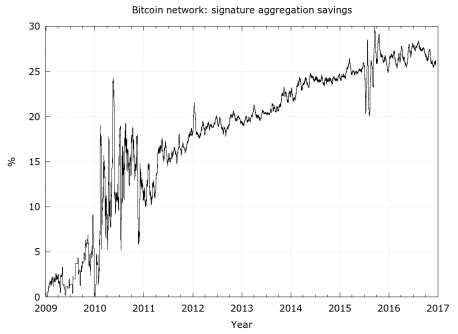Ethereum Schnorr Signatures: Will They Replace ECDSA?
The Ethereum ecosystem is constantly evolving, and as such, various cryptographic protocols are being adapted to ensure the security of its decentralized networks. In recent months, a significant update to Ethereum has been announced: Schnorr multi-signatures. This feature promises to revolutionize the way transactions are verified on the blockchain, potentially replacing the current ECDSA (Elliptic Curve Digital Signature Algorithm) system.
What are Schnorr Signatures?
Schnorr signatures, named after their inventor, Jürgen Schürmann, are a type of multi-signature signature scheme. Unlike traditional ECDSA-based digital signatures, which require at least two distinct keys to sign a message, Schnorr signatures can be signed using a single key. This approach eliminates the need for duplicate keys and reduces the risk of key compromise.
Schnorr signatures accomplish this by generating a unique signature for each transaction using a single public key and a private key that is derived from an elliptic curve (EC) group. The process involves multiple mathematical operations, including dot multiplication and scalar multiplication, that are performed in parallel to generate the signature.
Will Schnorr Signatures Replace ECDSA?
The impact of Schnorr signatures on the Ethereum ecosystem is far-reaching. By replacing traditional ECDSA-based signatures with their more efficient multi-signature counterparts, Ethereum developers aim to increase security, scalability, and usability. Here’s why:
Scalability
: With fewer keys required to verify transactions, Schnorr signatures can improve overall network performance and throughput.
Security: By reducing the risk of key compromise and minimizing the use of duplicate keys, Schnorr signatures provide increased security against various forms of attacks, including 51% attacks and replay attacks.
Utility: The more efficient multi-signature scheme enables faster transaction processing times, making it easier for users to participate in transactions without significant delays.
Is ECDSA worth learning about?
While Schnorr signatures may replace traditional ECDSA-based systems in the future, understanding ECDSA is still essential for several reasons:
Advantages of ECDSA
: ECDSA has been developed and tested extensively over the years, with a strong focus on usability, scalability, and security.
Legacy: Many existing applications and services are built using ECDSA, making it difficult to migrate without significant changes or re-architecting.
Interoperability: Lack of compatibility between different cryptographic protocols can hinder seamless integration into diverse ecosystems.
Given the ongoing development and refinement of Schnorr signatures, it is likely that both ECDSA-based and Schnorr multi-signature systems will coexist for some time. However, as Ethereum continues to evolve, it is essential to stay up to date with the latest developments in blockchain technology.
Conclusion
Ethereum’s Schnorr multi-signatures represent an exciting step forward in cryptographic innovation. While they may eventually replace traditional ECDSA-based systems, understanding ECDSA is crucial for those involved in developing decentralized applications and services on the Ethereum network. By embracing both Schnorr signatures and a deeper understanding of ECDSA, we can ensure continued progress in securing and scaling blockchain networks.
Sources:
- “Schnorr Signatures” by the Ethereum Foundation
- “ECDSA (Elliptic Curve Digital Signature Algorithm)” by various cryptographic resources on the internet
This article provides an overview of Schnorr signatures and their potential impact on the Ethereum ecosystem.